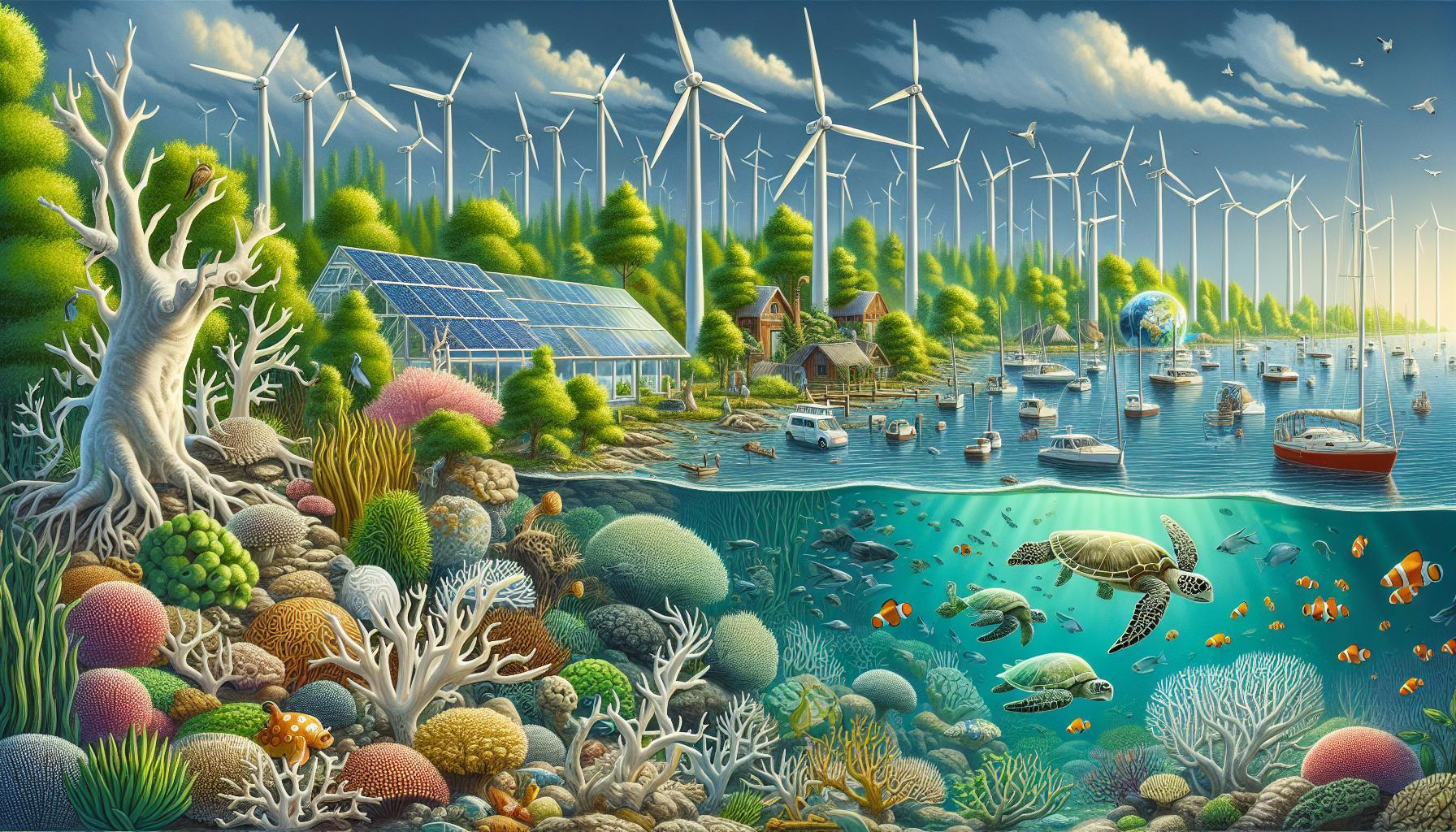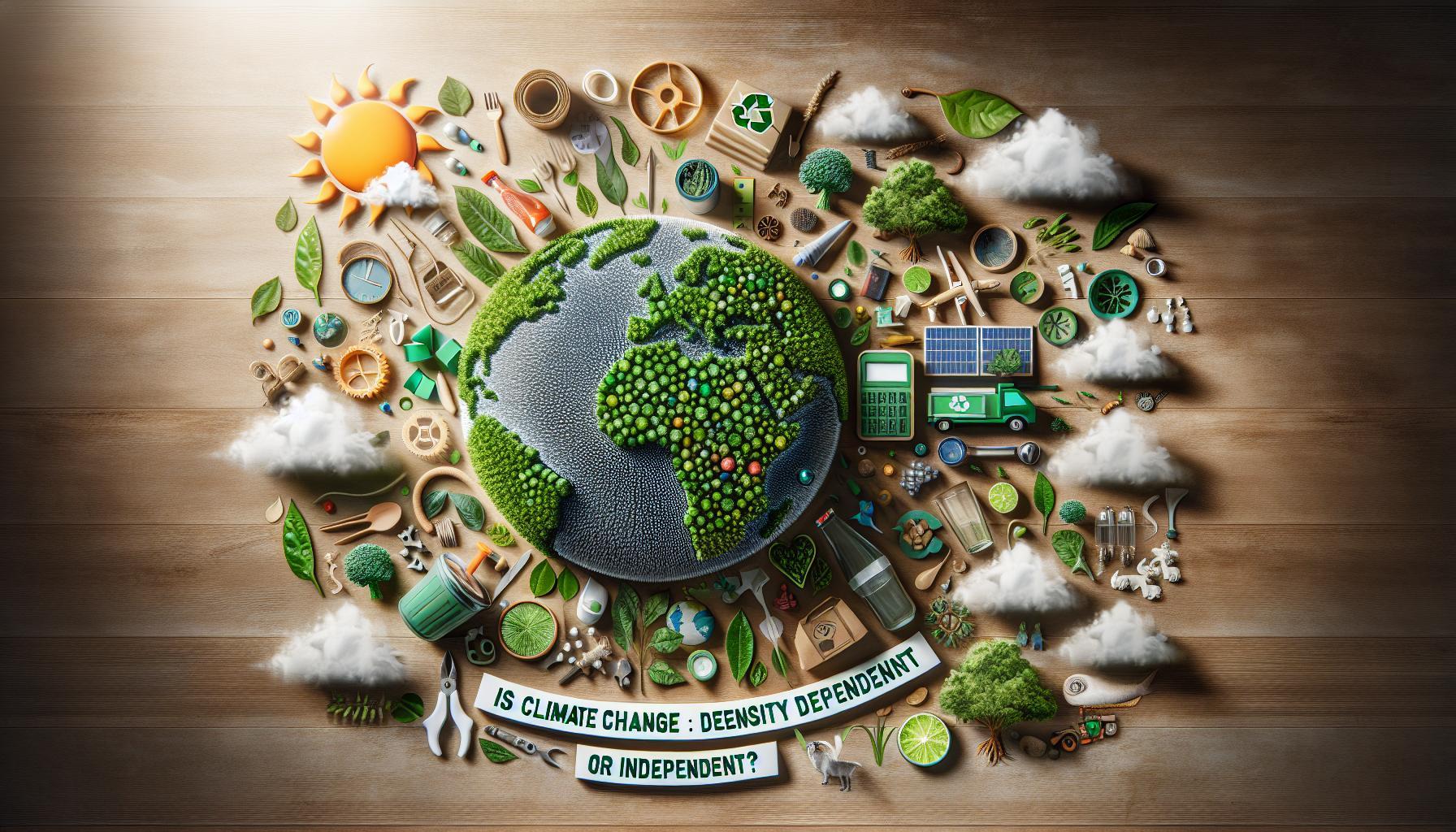Did you know that approximately 75% of the world’s coral reefs are currently at risk due to climate change? These vibrant ecosystems are not just stunning underwater gardens; they are vital for marine life and play a crucial role in maintaining the health of our oceans. Understanding how climate change impacts coral reefs is essential for anyone concerned about the future of our planet.
As temperatures rise and sea levels fluctuate, these delicate habitats face unprecedented challenges, affecting biodiversity, fishing communities, and even coastal protection. For those invested in environmental conservation or simply looking to protect our natural world, these insights are not just important-they are urgent.
In this article, we’ll explore the shocking impacts of climate change on coral reefs and highlight actionable steps we can take to combat this crisis. Join us as we uncover the connections between these enchanting ecosystems and our collective future, inspiring positive change that benefits both our environment and communities worldwide.
How Climate Change Alters Coral Reef Ecosystems
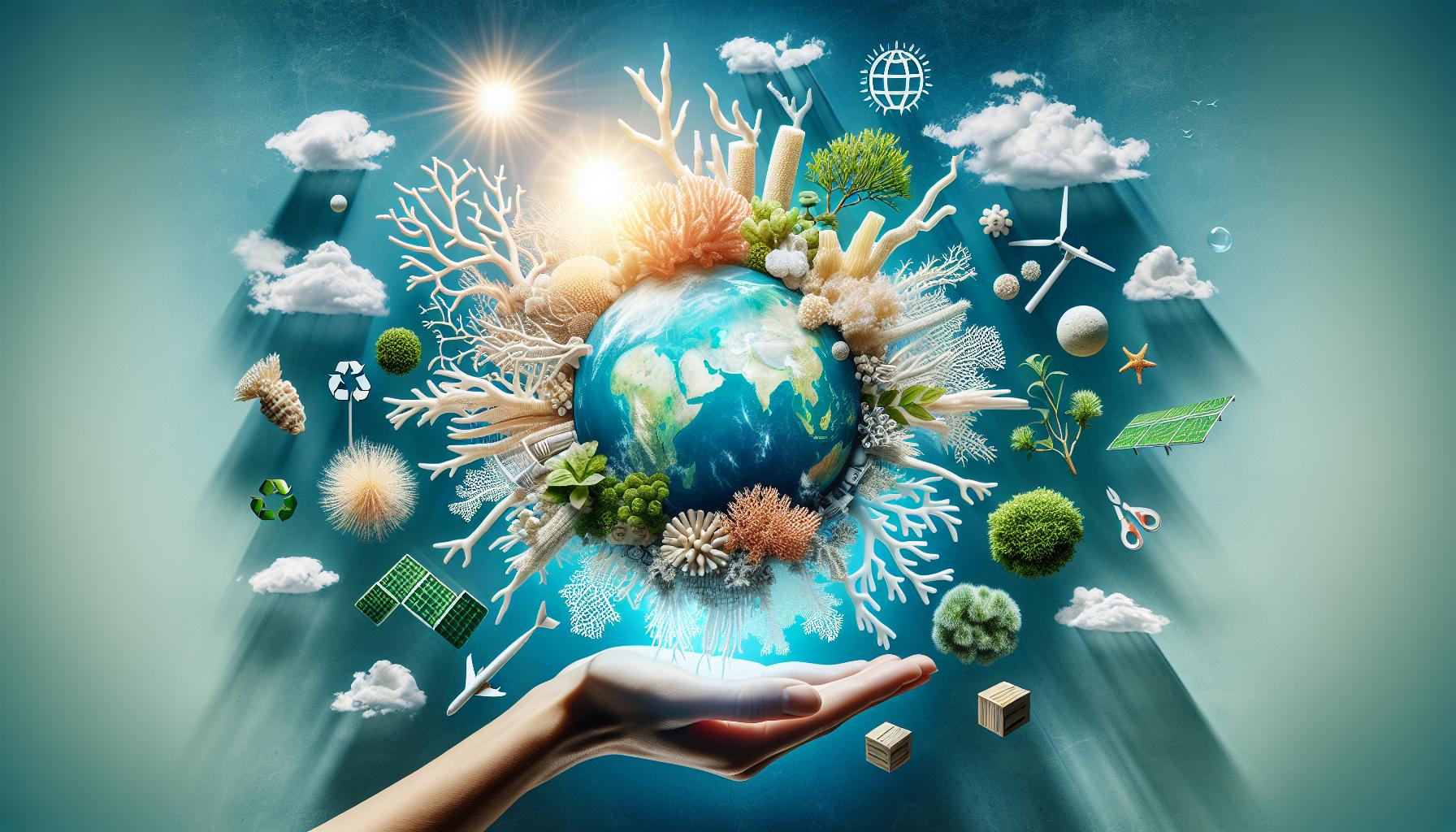
Coral reefs, often termed the “rainforests of the sea,” are vibrant ecosystems that not only support a wide array of marine life but also provide critical services to human communities such as coastal protection and tourism. However, climate change is altering these delicate ecosystems at an alarming rate. As global temperatures rise, the impact on coral reefs intensifies, giving rise to phenomena like coral bleaching, where corals expel the colorful algae living in their tissues, leading to their eventual death. This process weakens the entire reef system, reducing biodiversity and the resilience of marine habitats.
Temperature and Ocean Changes
Rising ocean temperatures are a primary driver of coral reef degradation. A mere increase of 1-2 degrees Celsius can significantly stress coral communities, making them vulnerable to diseases and reducing their reproductive success. Prolonged exposure to elevated temperatures can lead to widespread bleaching events. For instance, during the 2016 El Niño phenomenon, large swathes of the Great Barrier Reef experienced catastrophic bleaching, impacting not just the coral but also the myriad species that rely on this habitat for survival.
Acidification and Its Impact
In addition to warming waters, ocean acidification poses a serious threat to coral ecosystems. As carbon dioxide (CO2) emissions rise, a significant portion is absorbed by the oceans, leading to a decrease in pH. This process hampers the ability of corals to calcify, which is essential for building their skeletal structures. As a result, weakened corals become more susceptible to erosion and less able to recover from bleaching events. This dual threat of temperature rise and acidification presents unique challenges, putting unprecedented pressure on coral resilience.
Extreme Weather Events
Climate change also alters patterns of extreme weather, increasing the frequency and severity of storms that can physically damage coral reefs. Events such as hurricanes can fragment reefs and displace marine organisms, disrupting the ecological balance. Moreover, sediment runoff caused by heavy rains can smother corals, choking off their access to sunlight-crucial for their survival. These changes emphasize the need for integrated coastal management strategies that consider both climate impacts and local conservation efforts.
Through understanding these mechanisms, it becomes evident that safeguarding coral reefs requires concerted action at multiple levels, from local community initiatives to global policy shifts. Engaging with conservation efforts, advocating for sustainable practices, and educating others about the importance of coral ecosystems are critical steps individuals and communities can take to support these vital marine environments. By fostering awareness and participation, there’s a possibility for coral reefs to adapt and thrive despite the challenges posed by climate change, ensuring they continue to provide value for future generations.
The Science Behind Coral Bleaching
Coral bleaching is often described as a canary in the coal mine for ocean health, serving as a potent reminder of the stresses facing our marine ecosystems. When corals experience environmental stressors, particularly rising sea temperatures, they expel the symbiotic algae known as zooxanthellae that live within their tissues. This loss strips corals of their vibrant colors and significantly diminishes their ability to thrive, leading to a state of starvation and increased vulnerability to diseases. Without these algae, which provide essential nutrients through photosynthesis, corals struggle to survive, ultimately endangering the entire reef ecosystem that relies on their health.
Understanding is crucial for anyone interested in marine conservation. The process begins with stressors like elevated water temperatures-typically a rise of just 1-2 degrees Celsius above average can trigger a bleaching event. Other factors, such as pollution, overfishing, and freshwater runoff, exacerbate this response by adding additional stress to the corals. Symbiotic relationships are delicate; even minor disruptions can lead to significant consequences. For example, during the 2010 bleaching event in the Maldives, over 80% of the reefs were affected, illustrating the devastating potential of warming waters and highlighting the need for immediate action.
Impacts of Coral Bleaching
The implications of coral bleaching extend far beyond the corals themselves. Healthy reefs provide vital habitat for a multitude of marine species, including fish, crustaceans, and mollusks, many of which are key to human livelihoods. The decline of coral reefs can lead to reduced biodiversity and weakened fish populations, subsequently impacting local fisheries and economies. Communities that rely on reef tourism or fishing for their livelihoods face uncertain futures as these ecosystems deteriorate.
Pathways to Resilience
Fortunately, there is a growing body of knowledge and practices aimed at mitigating the impacts of coral bleaching. Restoration projects and coral gardening, where fragments of healthy corals are cultivated and transplanted to degraded areas, are gaining traction. These initiatives not only help revive coral populations but also foster community engagement and awareness. Additionally, reducing local stressors-through sustainable fishing practices, pollution control, and coastal management-can enhance coral resilience.
By becoming informed stewards of our marine environments and supporting conservation efforts, individuals can play a pivotal role in protecting these essential ecosystems. From participating in local beach clean-ups to advocating for policies that address climate change, every action counts toward safeguarding coral reefs for future generations. Educating others about the plight of coral reefs can create a ripple effect, promoting broader awareness and community action that is vital for ocean health.
Rising Ocean Temperatures: A Threat to Marine Life
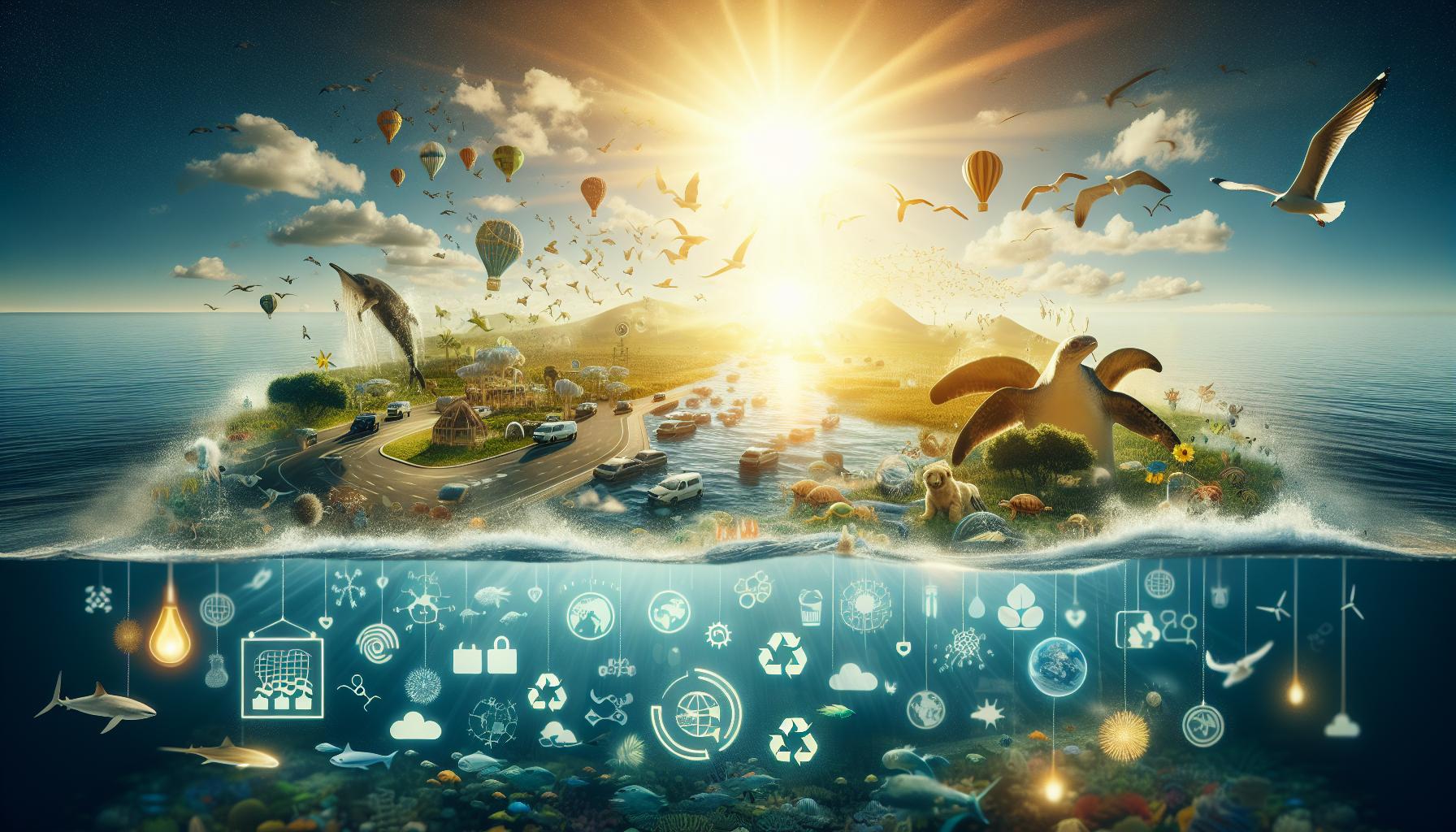
The increase in ocean temperatures poses a formidable challenge to marine ecosystems, particularly coral reefs, which serve as vibrant underwater cities housing a vast array of marine species. Just a slight rise of 1-2 degrees Celsius can trigger coral bleaching, a condition where corals expel the vital symbiotic algae, zooxanthellae, resulting in their loss of color and essential nutrients. This phenomenon not only impacts the corals themselves but reverberates through the entire marine food web, endangering the fish, crustaceans, and other organisms that rely on healthy reefs for habitat and sustenance.
As temperatures rise, corals face an uphill battle against stressors that contribute to poor health. For instance, in addition to temperature fluctuations, factors such as ocean acidification weaken coral structures, further exacerbating their vulnerability. The intricate relationships between these organisms and their environment are sensitive; a combination of stressors can result in the rapid decline of coral populations. The 2016 mass bleaching event, which affected more than 90% of the Great Barrier Reef, serves as a stark reminder of the risks that global warming carries for these delicate ecosystems.
It is critical to understand that while rising temperatures threaten coral reefs, the effects extend to the coastal communities that depend on these habitats for their livelihoods. Fisheries, ecotourism, and coastal protection from storms and erosion are all directly linked to the health of coral reefs. When reefs decline, communities experience not only ecological loss but economic hardship. By engaging in conservation efforts-such as supporting sustainable fishing practices, reducing plastic pollution, and participating in coral restoration initiatives-individuals can play a significant role in mitigating these impacts.
In addressing this critical issue, it is essential to also promote awareness of climate change’s broader implications on marine life and advocate for global and local policies aimed at reducing greenhouse gas emissions. Collective action, combined with scientific advancement in coral resilience strategies like breeding heat-tolerant coral species, can pave the way towards healthier oceans and thriving coral ecosystems. Enhancing public understanding of these challenges and encouraging proactive community involvement can foster a sense of stewardship vital for the survival of coral reefs and the countless lives they sustain.
Ocean Acidification and Its Impact on Coral Reefs
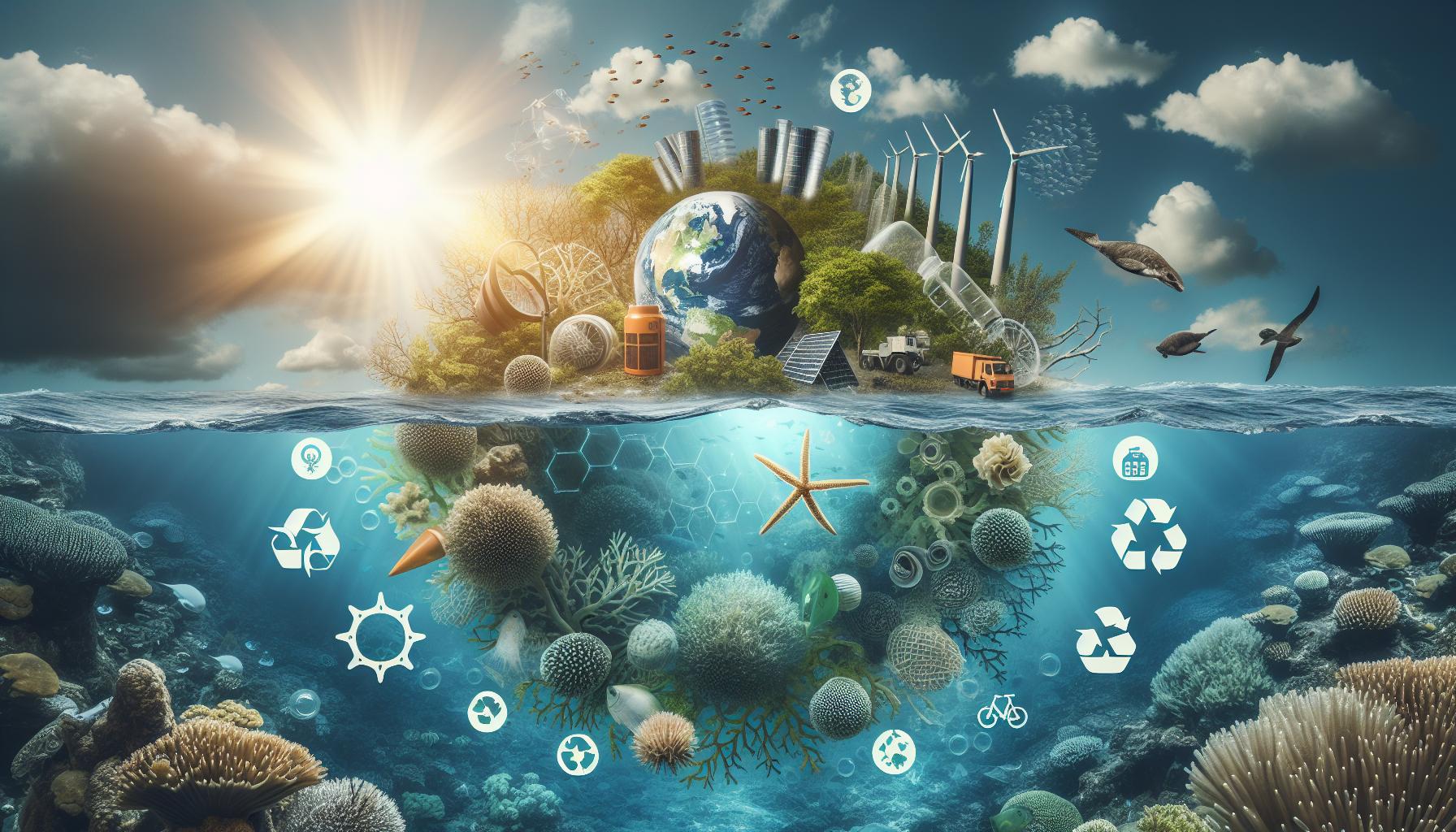
Rising levels of carbon dioxide (CO2) in the atmosphere are not just warming our planet; they are also altering the very chemistry of our oceans. As excess CO2 is absorbed by seawater, it leads to a decrease in pH, resulting in ocean acidification. A fascinating, yet concerning statistic reveals that since the beginning of the Industrial Revolution, the surface ocean has experienced an approximate 30% increase in acidity. This shift poses severe challenges for marine ecosystems, especially coral reefs, which are vital to coastal biodiversity and human welfare.
Coral reefs are built from calcium carbonate, a compound that is increasingly difficult for corals to produce in more acidic waters. When faced with lower pH levels, corals struggle to maintain their calcium carbonate skeletons, jeopardizing their structural integrity and resilience. This process not only threatens the corals themselves but has cascading effects on the myriad of species that seek refuge and sustenance within these vibrant ecosystems. The consequences manifest as reduced biodiversity, diminished fish populations, and weakened natural barriers that protect coastlines from storms and erosion.
### Implications for Coral Health and Biodiversity
The interplay between ocean acidification and rising temperatures exacerbates the existing stress on coral reefs. Studies have shown that corals subjected to both phenomena are more likely to experience significant bleaching and mortality. This dual threat can lead to the collapse of the reef ecosystem, making it essential to adopt proactive measures to protect these vital habitats. Key strategies include:
- Reducing CO2 Emissions: Supporting policies and initiatives that aim to lower greenhouse gas emissions on a global scale is critical.
- Community Engagement: Participating in local conservation programs can aid in protecting vulnerable coral areas from further stress.
- Supporting Sustainable Practices: Choosing sustainable seafood and reducing plastic waste can help minimize additional pressure on coral reefs.
### Innovative Research and Restoration Efforts
Amid these challenges, hope exists through innovative scientific research and community efforts. Some projects focus on breeding coral species that exhibit greater resilience to acidifying waters, while others explore techniques like coral gardening, where fragments of healthy corals are cultivated in nurseries before being transplanted back onto damaged reefs. By harnessing both nature and human ingenuity, we can aid coral reefs in adapting to changing conditions, ensuring their survival for generations to come.
Engaging with this issue as a global community is vital. Ultimately, understanding the impacts of ocean acidification is not just a scientific endeavor; it is a call to action to protect our planet’s future. Embracing both individual and collective responsibility can bring about meaningful change, ensuring that the colorful, complex world beneath the waves continues to thrive.
Impact of Climate Change on Coral Biodiversity
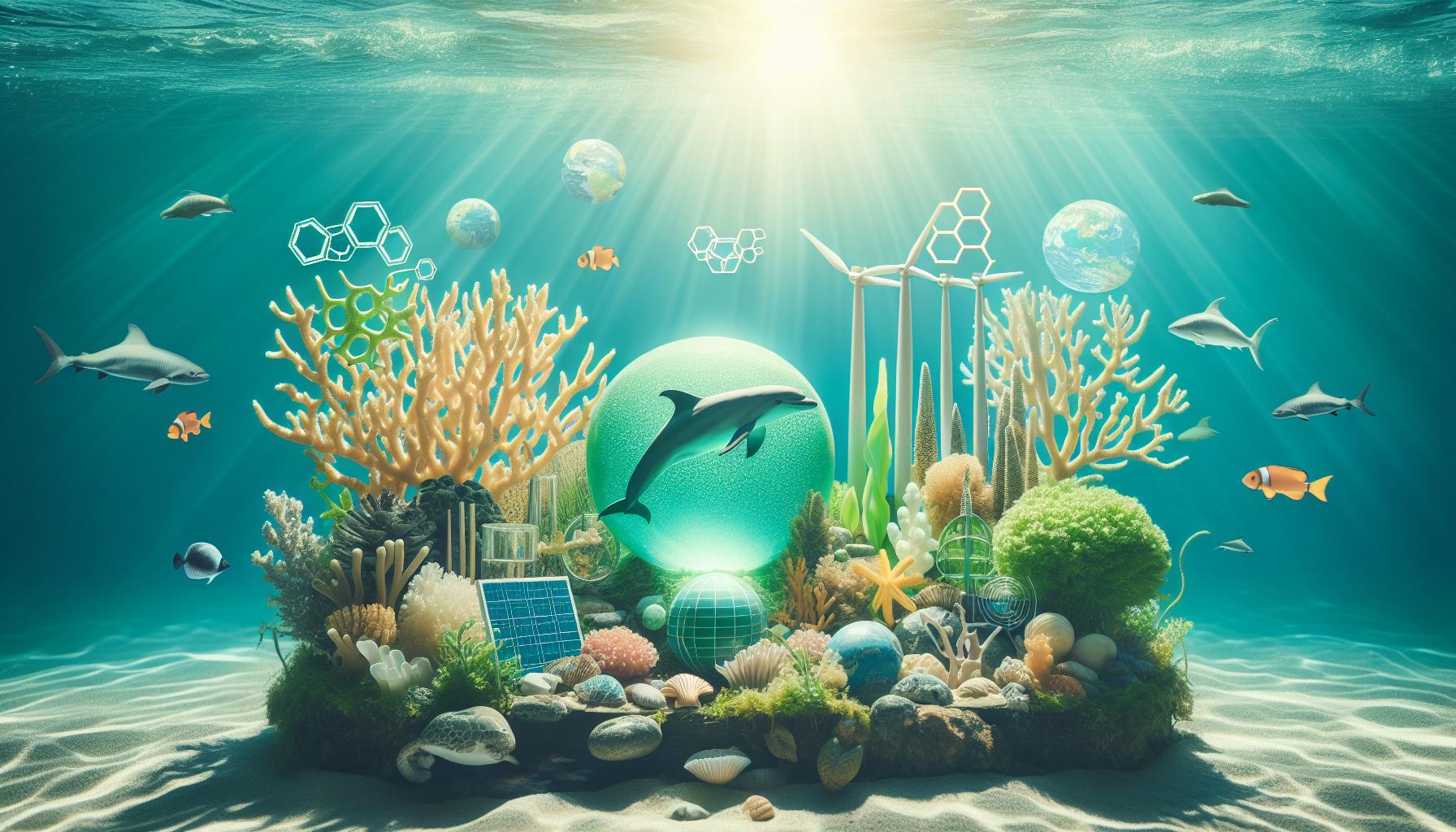
The staggering loss of coral biodiversity across the globe resonates with alarming urgency. Recent studies estimate that live coral cover has declined by nearly 50% since the 1950s, largely due to the stressors imposed by climate change. As ocean temperatures rise, not only do reefs face bleaching events, but the intricate web of life that depends on these underwater structures also faces unprecedented threats. When corals are compromised, so too are the countless species that rely on them for habitat, food, and protection.
Change is not just quantitative; it significantly alters species composition. Warmer waters have pushed many coral species beyond their thermal limits, enabling more thermally resilient species to invade and take over. While some of these species may initially seem beneficial, they often lack the biodiversity that creates a resilient ecosystem. This shift can lead to monoculture-like environments that become increasingly vulnerable to diseases and extreme weather, further exacerbating biodiversity loss. The decline of key species can have particular reverberations; for instance, the loss of herbivorous fish like parrotfish, which help control algal growth on reefs, can fundamentally disrupt the socio-ecological balance.
Adaptation and Resilience
Despite the grim statistics, there is room for hope. Many organizations and communities across the globe are working diligently to protect and restore coral biodiversity. Restoration techniques, such as the establishment of marine protected areas (MPAs) and the rehabilitation of damaged reefs through coral gardening, have shown promising results. Studies have displayed that areas with robust MPAs exhibit significantly higher biodiversity levels compared to those without protection. These efforts serve as a beacon to illustrate that, with a commitment to science-based conservation strategies, we can support the resilience and recovery of these vibrant ecosystems.
While individual actions may seem small, they are tremendously impactful. Supporting sustainable tourism that educates visitors about coral ecosystems or engaging in local reef clean-ups can make a significant difference. Additionally, advocating for policy changes aimed at reducing carbon emissions can help mitigate the broader impacts of climate change on coral biodiversity. Each effort, big or small, contributes to a collective movement towards restoring our oceans.
In conclusion, fostering coral biodiversity amid climate change is not merely an ecological challenge; it is a human responsibility. By embracing both innovative restoration techniques and local community engagements, we can offer a lifeline to these extraordinary ecosystems, preserving their beauty and functionality for generations to come.
Effects of Extreme Weather Events on Coral Reefs
Extreme weather events, including hurricanes, cyclones, and heavy rainfall, have intensified in frequency and severity due to climate change, posing significant and often devastating threats to coral reefs. These ecosystems, already vulnerable to rising temperatures and ocean acidification, are now facing additional pressures from these violent natural occurrences, which can disrupt their delicate balance and hinder recovery efforts.
The impact of severe storms on coral reefs can be catastrophic. High-energy waves and strong currents can physically damage coral structures, breaking pieces off and creating rubble fields, which can take decades to regenerate. Additionally, increased sedimentation from land runoff can smother corals and block essential sunlight needed for photosynthesis. Research indicates that after a significant storm event, the recovery of affected reefs is often slow, particularly in areas where the local marine environment has been already compromised by pollution or overfishing.
Specific Impacts of Extreme Weather
The consequences of extreme weather on coral reefs can be observed through various mechanisms:
- Physical Damage: Strong storms can uproot coral colonies, displace marine life, and create underwater landslides, all leading to increased mortality rates among coral species.
- Water Quality Deterioration: Heavy rainfall can introduce pollutants and excess nutrients into coastal waters, which can lead to algal blooms that further threaten coral health.
- Temperature Spikes: Post-storm conditions can cause localized heating of ocean waters, which along with other stressors can trigger further bleaching events.
The road to recovery for coral reefs impacted by extreme weather is steep, yet not insurmountable. Community efforts have demonstrated the potential for resilience through initiatives such as rehabilitation projects and the establishment of more marine protected areas (MPAs). For instance, after Hurricane Irma in 2017, restoration programs in the Caribbean focused on replanting damaged coral species and gave rise to collaborative efforts that engaged local communities in monitoring reef health.
Furthermore, individuals can play a role in fostering resilience amid these challenges. Supporting policies focused on climate change mitigation, participating in local reef conservation programs, and advocating for the responsible management of coastal environments can significantly improve the chances of coral reefs recovering from the impacts of extreme weather. By embracing a spirit of stewardship and cooperation with science-based approaches, we can help safeguard these vital ecosystems from the foreseeable threats posed by a changing climate.
Socioeconomic Consequences for Coastal Communities
The health of coral reefs is intricately linked to the well-being of coastal communities around the globe. As vital ecosystems, coral reefs provide a myriad of socioeconomic benefits that sustain livelihoods, enhance cultural identities, and support local economies. However, the impacts of climate change and the degradation of these marine environments pose significant risks to these communities, leading to a decline in tourism, fisheries, and coastal protection.
Coral reefs contribute approximately $375 billion annually to the global economy, primarily through tourism and fisheries. Tourists flock to coral-rich destinations for snorkeling, diving, and other recreational activities, driving economic growth in regions that rely heavily on marine tourism. When coral reefs suffer from bleaching and damage due to rising ocean temperatures and extreme weather events, the vibrant marine life and stunning underwater landscapes that attract visitors vanish. For instance, in the Bahamas, the economic fallout from reef degradation has been felt acutely, with diving and fishing industries reporting decreased revenue, unemployment, and challenges in maintaining local businesses.
Fisheries and Food Security
In addition to tourism, coral reefs play a crucial role in supporting local fisheries. They serve as nursery grounds for many commercially important fish species, which means that healthy reefs are essential for sustainable fish populations. As reef health declines, fish stocks diminish, directly impacting food security for coastal communities that depend on fish as a primary source of protein. It is estimated that over 500 million people around the world rely on coral reefs for their livelihoods, underscoring the importance of these ecosystems not just for biodiversity but also for human welfare.
Community Resilience and Adaptation Strategies
Communities are not powerless in the face of these challenges. Initiatives can be developed to foster resilience and safeguard the socioeconomic benefits coral reefs provide. Local governments and organizations are increasingly recognizing the value of integrated coastal management, which includes establishing marine protected areas (MPAs) and promoting sustainable fishing practices. These strategies not only help preserve coral ecosystems but also create alternative revenue streams, such as ecotourism.
In places like Indonesia, local fishermen have embraced sustainable fishing practices by participating in community-led initiatives that prioritize reef health over short-term gains. By adopting measures such as rotating fishing zones and using reef-friendly gear, communities have seen significant improvements in both reef recovery and fish populations, leading to a resurgence in local economies.
As individuals, we can contribute to these efforts by supporting local conservation programs, advocating for sustainable policies, and educating ourselves and others about the importance of coral reefs. Through community action and engagement, we can help ensure that coral reefs continue to provide their invaluable socioeconomic benefits for generations to come, turning the tide against the impacts of climate change while fostering strong, resilient coastal communities.
Mitigation Strategies for Coral Reef Preservation
Among the most extraordinary ecosystems on Earth, coral reefs cover less than 1% of our planet’s ocean floor but support approximately 25% of all marine species. However, these vibrant underwater worlds face dire threats from climate change, prompting a need for comprehensive and effective mitigation strategies. Understanding the factors contributing to coral degradation is the first step in developing actionable plans that can preserve these ecosystems and the myriad of benefits they provide.
One compelling strategy involves the establishment of marine protected areas (MPAs). By restricting certain activities, such as overfishing or pollution, in designated zones, MPAs can help foster the recovery and resilience of coral reefs. For instance, the Great Barrier Reef Marine Park in Australia has successfully implemented such measures, allowing specific regions to rebound from stressors while supporting biodiversity. Recognizing the interconnectedness of terrestrial and marine environments, local governments and communities can engage in integrated coastal zone management that promotes sustainable practices across land and sea.
Supporting Local and Sustainable Practices
Another crucial approach is empowering local communities to adopt sustainable fishing practices that reduce the pressure on coral reefs. Engaging fishermen in co-management schemes, as seen in the Philippines, where fishers and local governments work together to manage fish stocks and protect coral habitats, demonstrates that community-led initiatives can have a significant positive impact. Techniques such as catch limits and seasonal closures can ensure that fish populations remain abundant while giving coral reefs time to recover from stressors.
Investing in Coral Resilience
Innovative science-based interventions, such as coral gardening and assisted evolution, are becoming promising avenues for preserving coral populations. Coral gardening involves cultivating young corals in nurseries until they are strong enough to be replanted onto degraded reefs. Meanwhile, research into coral breeding programs focuses on enhancing the resilience of corals to withstand warmer temperatures and degraded water quality. Such strategies not only restore damaged ecosystems but also promote biodiversity and help sustain the livelihoods of communities reliant on healthy reef systems.
Community Engagement and Education
Finally, public engagement and education play pivotal roles in promoting coral reef preservation. Informing local communities and tourists about the fragility of coral ecosystems can foster a sense of responsibility and urgency. Initiatives like beach clean-ups, educational workshops, and citizen science projects allow individuals to participate actively in conservation efforts. Encouraging community members to share their stories and experiences can further amplify awareness and inspire action among peers, leading to more effective and widespread preservation efforts.
By fostering collaboration among governments, scientists, and local communities, we can harness our collective strength to implement these mitigation strategies, safeguarding coral reefs for future generations while enhancing the socioeconomic stability of coastal regions worldwide.
Innovative Solutions for Coral Restoration
Coral reefs are not just beautiful underwater landscapes; they are vital ecosystems that provide numerous services, including coastal protection and supporting marine biodiversity. As climate change continues to threaten these remarkable structures, innovative restoration techniques have emerged as beacons of hope for their survival. One such approach is coral transplantation, where resilient coral species are strategically relocated to damaged areas, helping to jump-start recovery. This method can be enhanced by leveraging native coral nurseries-controlled environments that nurture juvenile corals until they are robust enough for replanting.
Utilizing Technology in Coral Restoration
The advent of technology has ushered in exciting possibilities for coral restoration. Artificial intelligence (AI) and drones are increasingly being utilized to monitor reef health and map coral distributions. For example, researchers are using AI algorithms to analyze underwater imagery, allowing for more precise assessments of coral health and faster identification of areas needing intervention. Drones can survey large swathes of reef systems efficiently, providing valuable data for creating targeted restoration plans.
Another promising innovation is genetic intervention. Scientists are exploring methods to breed coral that can withstand higher temperatures and acidification, which are direct consequences of climate change. This involves cross-breeding naturally occurring resistant corals, as well as experimenting with biotechnological enhancements to increase their resilience. As these methods develop, they may offer a sustainable path to rebuilding coral populations.
Community-Led Initiatives
The role of local communities in these restoration efforts cannot be overstated. Grassroots movements have spearheaded community-based coral restoration projects that not only involve scientific techniques but also empower local stakeholders. For example, in Indonesia, fishermen have adopted coral gardening methods, cultivating and transplanting corals alongside sustainable fishing practices. These initiatives help rehabilitate reefs while providing economic benefits, fostering a deep-rooted connection between communities and their marine environments.
As we look to the future, collaboration between scientists, governments, and local communities will be essential for the sustainable restoration of coral ecosystems. Implementing these innovative solutions presents a viable pathway for coral recovery, demonstrating that with determination and creativity, we can turn the tide against the adverse effects of climate change on coral reefs.
Community Action: How You Can Help Coral Reefs
Engaging in the preservation and restoration of coral reefs requires a collective effort, and every individual can make a significant difference. One captivating fact is that coral reefs support around 25% of all marine species, yet they are threatened by climate change, pollution, and overfishing. By adopting sustainable practices and supporting local initiatives, individuals can help mitigate these impacts and foster healthier marine ecosystems.
To make a real impact, consider participating in or supporting local coral restoration projects. Many coastal communities have grassroots organizations focused on reef rehabilitation through methods like coral gardening, where volunteers grow and transplant coral fragments to damaged areas. For instance, initiatives in places such as the Maldives and the Caribbean have successfully involved local divers and community members in the restoration process, creating a sense of ownership and stewardship. These programs often welcome volunteers, providing training on the best practices for coral care and restoration.
Additionally, reducing your carbon footprint is crucial in combating climate change, which is one of the primary threats to coral reefs. Simple actions can add up: adopt energy-efficient habits, use public transportation, reduce water usage, and choose sustainable seafood options. By being mindful of your consumption and supporting companies that prioritize sustainability, you contribute to the larger fight against ocean warming and acidification, both detrimental to coral health.
Educating yourself and others about the importance of coral reefs not only raises awareness but also inspires action. Host community events, engage in discussions on social media, or create educational content that highlights the significance of reefs and the current threats they face. You could also consider fundraising for organizations dedicated to coral conservation. Every action, no matter how small, contributes to the broader movement to protect these critical ecosystems for future generations.
By committing to community action, participating in local conservation efforts, and leading by example through sustainable practices, individuals can collectively turn the tide against the crisis facing coral reefs today. The path to restoration is challenging, but with a determined and engaged community, there is hope for a healthy marine future.
Future Projections: What Lies Ahead for Coral Reefs
Coral reefs, often referred to as the “rainforests of the sea,” are facing an uncertain future shaped by the ongoing impacts of climate change. As temperature rises and ocean chemistry shifts, these vibrant ecosystems are not just at risk; they are undergoing fundamental changes that could redefine marine biodiversity. Recent studies indicate that if global temperatures continue to rise at the current rate, we could lose up to 90% of coral reefs by 2050. This staggering potential loss calls for both urgent action and innovative thinking to reverse the tide.
To understand better what lies ahead, it’s crucial to recognize the interactions between climate-related stressors. Rising sea temperatures lead to coral bleaching, a phenomenon where corals expel the symbiotic algae (zooxanthellae) that provide them with energy and color. When temperatures rise beyond corals’ tolerance levels, they lose their color and, more importantly, their energy source, which could result in widespread mortality. Some species may adapt to warmer conditions, but the rapid pace of climate change poses a significant challenge.
The Role of Ocean Chemistry
In addition to rising temperatures, ocean acidification exacerbates the threat to coral reefs. As carbon dioxide (CO2) emissions increase, the ocean absorbs more CO2, leading to lower pH levels and more acidic waters. This change affects coral’s ability to calcify, weakening their structures and making them more susceptible to erosion and disease. A study by the University of California, Santa Barbara, highlights that by 2100, calcifying organisms, including corals, may struggle to maintain their skeletons, fundamentally altering reef structures.
The future could also hold extreme weather events as a major factor. As climate change increases the frequency and intensity of storms, coral reefs, already stressed by temperature and acidification, face additional challenges. Storm surges can cause physical damage, uprooting coral and disrupting the delicate balance of reef ecosystems. These events lead to long-term degradation, which can take decades for reefs to recover, if they ever do.
Hope Through Action and Innovation
Despite the challenges, there’s hope for coral reefs through targeted conservation strategies and community efforts. Innovative techniques such as assisted evolution, where scientists breed more resilient coral strains or use selective breeding to enhance their stress tolerance, are being explored. These methods aim to boost the adaptability of corals in a changing environment.
Moreover, community-led conservation initiatives can cultivate a culture of stewardship. By engaging local populations in monitoring reef health, promoting sustainable fishing practices, and reducing pollution, communities can create resilient marine ecosystems. By investing in education and fostering a sense of responsibility, the next generation can be armed with the knowledge and tools needed to care for these vital resources.
In conclusion, while the challenges facing coral reefs are significant, they are not insurmountable. Collective action, innovative solutions, and a commitment to sustainable practices can create a pathway toward preserving these ecosystems for future generations. By understanding the impacts of climate change and actively participating in conservation efforts, we can advocate for a future where coral reefs thrive, sustaining marine life and supporting the livelihoods of coastal communities.
Q&A
Here’s an SEO-optimized FAQ section for “How Climate Change Affects Coral Reefs: Shocking Impacts” formatted for easy implementation of schema markup, featuring relevant long-tail keyword variations and addressing user questions effectively.
Q: How does climate change impact coral reefs?
A: Climate change affects coral reefs primarily through rising ocean temperatures, causing coral bleaching, and acidification, which weakens coral structures. Protecting reefs requires reducing carbon emissions and supporting marine conservation efforts. For more insights, check our detailed section on coral bleaching.
Q: What are the shocking effects of climate change on coral reefs?
A: Shocking effects include extensive coral bleaching, loss of biodiversity, and increased vulnerability to diseases. These changes disrupt marine ecosystems and threaten the livelihoods of communities that depend on healthy reefs. Explore our extensive research on these impacts for more details.
Q: Why are coral reefs important in the context of climate change?
A: Coral reefs are vital as they provide habitat for diverse marine species, protect shorelines, and support local economies through fishing and tourism. Their degradation due to climate change can lead to significant ecological and economic losses. Learn how protecting coral reefs can combat climate change effects.
Q: When will climate change seriously threaten coral reefs?
A: Climate change is currently threatening coral reefs, with projections indicating that if global temperatures rise by 1.5°C, we could lose 70-90% of coral reefs. Immediate action is required to mitigate these threats. For tips on supporting coral reef health, refer to our community action section.
Q: Where are coral reefs most affected by climate change?
A: Coral reefs in regions like the Great Barrier Reef, the Caribbean, and Southeast Asia face severe impacts from climate change. Localized factors, including pollution and overfishing, exacerbate these issues. For a deeper dive into affected areas, visit our detailed geographic impact analysis.
Q: What can individuals do to help protect coral reefs from climate change?
A: Individuals can reduce their carbon footprint, support sustainable seafood, and participate in local conservation efforts to help protect coral reefs. Engaging in community clean-ups also contributes to healthier marine environments. Check our actionable steps guide for further involvement options.
Q: Are there any solutions to combat climate change effects on coral reefs?
A: Solutions include implementing marine protected areas, restoring damaged reefs, and reducing greenhouse gas emissions. Promoting sustainable tourism and supporting scientific research can also lead to effective conservation strategies. For a list of innovative solutions, see our section on coral restoration efforts.
Q: How does coral bleaching relate to climate change?
A: Coral bleaching occurs when stressed corals expel the symbiotic algae living in their tissues due to rising water temperatures, leading to a loss of color and vital nutrients. This process is directly linked to climate change and has devastating consequences for reef ecosystems. Discover more about the bleaching process in our main article.
These Q&A pairs effectively capture user intent, provide concise answers, and are rich in relevant keywords while encouraging readers to explore the main content further.
In Summary
As we’ve explored, the impacts of climate change on coral reefs are both alarming and vital to address. These vibrant ecosystems are not just home to diverse marine life but also play a crucial role in our planet’s health. By understanding how warming waters, ocean acidification, and habitat degradation threaten these underwater marvels, we can better appreciate our responsibility to act.
If you’re keen to learn more about actionable steps we can take to protect coral reefs and combat climate change, check out our articles on Sustainable Practices for Marine Conservation and The Importance of Biodiversity in Ocean Health. We invite you to join our community! Sign up for our newsletter for regular updates on coral reef protection, sustainable living tips, and ways to get involved. Your voice matters-share your thoughts in the comments below and let us know what you think about these environmental challenges. Together, we can inspire hope and drive positive change for our oceans. Explore, advocate, and be part of the solution today!

